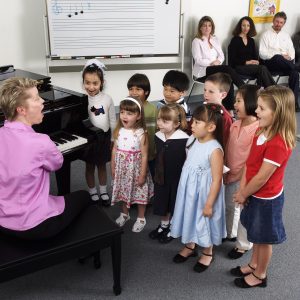Top 10 Reasons Why Yamaha Music Classes Are The Best Way For Children To Learn Music

You might be wondering why Yamaha Music Classes for children are unlike any other music classes? There are many differences in how Yamaha music classes are taught, and for every difference there is, there are reasons that are research-based and proven to work the most effectively. Here are the top 10 reasons why Yamaha music classes are the best way for children to learn music, but don’t stop there, sign-up for a free preview class to see one for yourself.
10. It’s fun. Children enjoy the interaction with other children and learn from each other. They also enjoy sharing with their parents.
9. It’s an hour a week. Because of the varied activities, children are able to learn for an entire hour rather than just 30 minutes.
8. Ear training is possible on a sophisticated level. Children become excellent listeners, performers, and creators of music because of group singing, solfege training, music appreciation, and keyboard playing.
7. Group learning helps to establish a strong sense of pulse within each child through rhythmic body movement and group singing and keyboard playing. A good sense of rhythm is essential to musical success.
6. Confidence increases. Children perform with and for the group and learn the joy of accomplishment. The poise they gain goes with them into other settings.
5. Children receive the tools necessary to create their own music. They hear and reproduce melodies and learn to listen for harmonies. Soon they are able to choose the chords that fit with the melody. This is the basis for improvisation and composition. In addition, the aural skills they develop will allow them to imitate the music they hear on the radio, CDs, or TV.
4. Accountability. The group pace requires that students develop good practice routines. Progress is usually more consistent in a group setting.
3. Teachers are trained in group teaching techniques. Activities that may seem boring in private setting can be fun in a group. Skills necessary for future success in choir, band, or orchestra are easily taught in group lessons.
2. Ensemble performance is the activity of choice for most students. Children love the combination of orchestral sounds and rhythms. It is a challenge for them to play their own parts correctly while listening to the musical whole.
1. Yamaha methods and materials are age appropriate capitalizing on the strongest skills and learning style of each age. Children experience success because the curriculum is based on their developmental stage and interest.


Leave a Reply